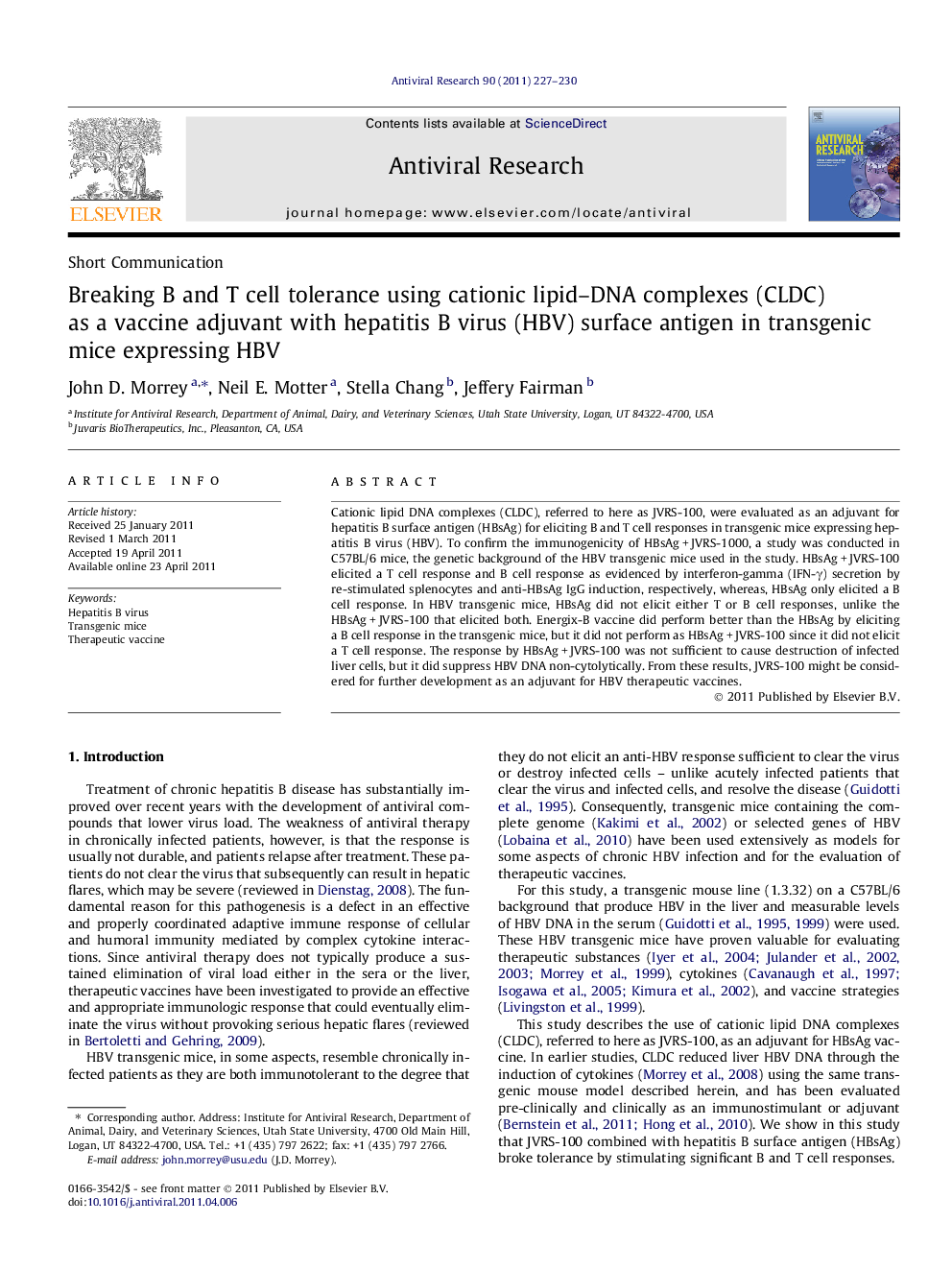| کد مقاله | کد نشریه | سال انتشار | مقاله انگلیسی | نسخه تمام متن |
|---|---|---|---|---|
| 2510261 | 1557844 | 2011 | 4 صفحه PDF | دانلود رایگان |

Cationic lipid DNA complexes (CLDC), referred to here as JVRS-100, were evaluated as an adjuvant for hepatitis B surface antigen (HBsAg) for eliciting B and T cell responses in transgenic mice expressing hepatitis B virus (HBV). To confirm the immunogenicity of HBsAg + JVRS-1000, a study was conducted in C57BL/6 mice, the genetic background of the HBV transgenic mice used in the study. HBsAg + JVRS-100 elicited a T cell response and B cell response as evidenced by interferon-gamma (IFN-γ) secretion by re-stimulated splenocytes and anti-HBsAg IgG induction, respectively, whereas, HBsAg only elicited a B cell response. In HBV transgenic mice, HBsAg did not elicit either T or B cell responses, unlike the HBsAg + JVRS-100 that elicited both. Energix-B vaccine did perform better than the HBsAg by eliciting a B cell response in the transgenic mice, but it did not perform as HBsAg + JVRS-100 since it did not elicit a T cell response. The response by HBsAg + JVRS-100 was not sufficient to cause destruction of infected liver cells, but it did suppress HBV DNA non-cytolytically. From these results, JVRS-100 might be considered for further development as an adjuvant for HBV therapeutic vaccines.
Journal: Antiviral Research - Volume 90, Issue 3, June 2011, Pages 227–230